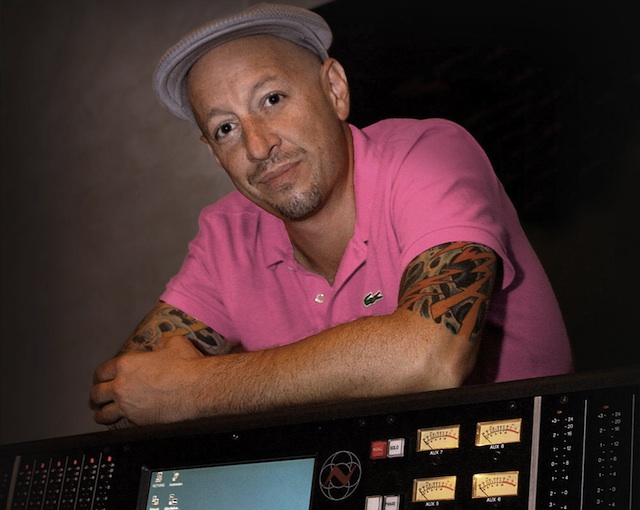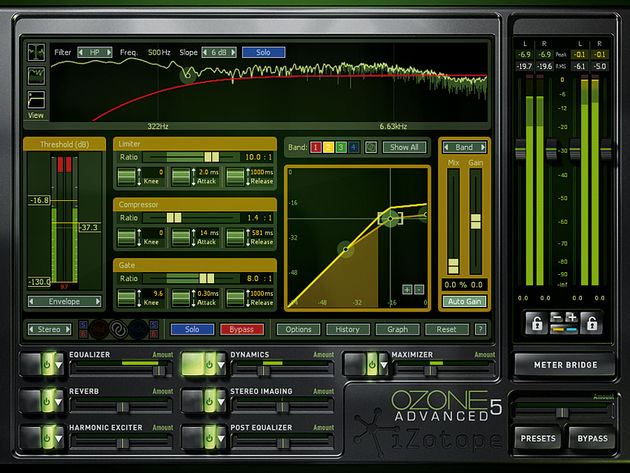My name is Daniel Wyatt. I have been an audio engineer and educator for 30 years. I have taught mixing and mastering at both SAE New York and Dubspot for over ten years.
Splice has really changed the way I work with clients and students alike. I created a working mix project to demonstrate a few tips and hopefully clarify a few common questions. While I do tend to use a good amount of third party plug-ins in my work (iZotope, Soundtoys, UA, Fabfilter, Sonnox, Altiverb etc), I thought it would be cool to demonstrate some of these techniques with the indigenous Ableton Live plug-ins — both for compatibility and simplicity.
Here are some tip’s and tricks for producers and mixer’s that you might find helpful. I have broken them down into sub categories for organizational purposes. To follow along, sign up for a free Splice account and download the project below:
The song is by Savrsi (@Savrsi), a talented Boston-based producer & DJ. Like him at facebook.com/Savrsi to stay updated on new releases and get a free download of the final track.
1. Low Frequency Management:
One of the most important tasks when mixing is to get the low end right. Kick and bass frequency often overlap and must be managed. The two most important tools here are reductive eq and sidechain compression. Both the kick and the bass should have the ultra low frequency trimmed with a low shelf. Typically I apply between .5 and 1 dB of reductive low shelf between 30 and 50 hZ. Many people like to use a HPF, but I find that it eats up too much of the good low end.
Also, it is critical to side-chain the sub bass to the kick, so that the sub bass ducks just a bit when the kick sounds. Not only does this create a bounce in the groove, but it also keeps the speaker from getting congested in the low frequencies. I find that an attack of 1 ms and a release of 30 – 50 ms is a good starting point with a ratio of 6:1. Then filter the side chain input to make a tighter bounce, and adjust the amount of ducking with the threshold to taste.
2. Saturation:
I cannot stress enough the importance of saturation. In the golden age of analog production of the 1970s there was an abundance of saturation, i.e. tubes, tape, transformers and the like. Then as soon as digital appeared, all of the saturation vanished! Now saturation is reappearing in digital form. Saturation creates additional harmonics that thicken the sound and make it richer. An unsaturated mix sounds boring and sterile, while a well saturated mix sounds thick and full. The analog clip flavor in Ablation’s saturator is extremely useful — with the most important controls being the drive and the wet/dry controls.
3. Reverb:
Many people are confused as to how to set up reverb. Too often I see a mix project with 50 reverbs on insert of individual tracks. This is not only wasteful in terms of DSP, but it’s sonically confusing. Elements that share a reverb have a relatedness that can help unify the mix. Putting a small amount of small or medium room on everything creates an important cohesion. From there the mixer needs to start to place elements in either the front, middle or back of the mix. Elements that live in the front of the mix, e.g. lead vocals or melodic lead lines will typically take a plate reverb. Elements that live in the back of the mix will usually take a hall reverb. These shared reverb exist on return tracks and the amount of wetness is controlled by the send matrix.
Once in while it is of course ok to put the reverb directly on the individual element channel, like a kick explosion or dub effect, but for the majority of the mix the send/return matrix is the proper way to set up the reverb game.
I hope you have found this session helpful. Splice.com has already in a very short time changed the way we work — both in audio production and education. Please stay tuned to splice.com for more upcoming tips and tricks, and follow me on twitter @mixmasterwyatt.
Thank you,
Danny “Mixmaster” Wyatt
wyattmixmaster.com
Splice is the cloud platform for music creation, collaboration and sharing. Sign up for a free account to collaborate with producers around the world. Explore thousands of sessions to learn from and create your own version.
January 7, 2015



